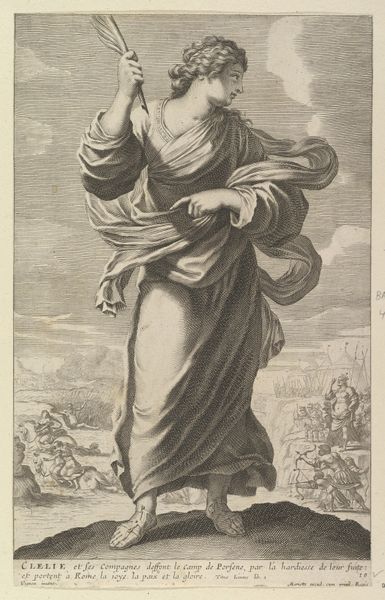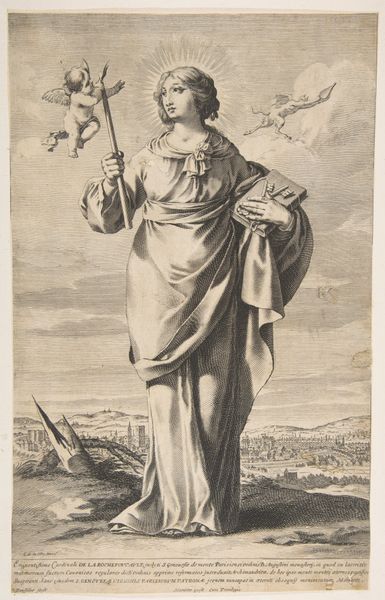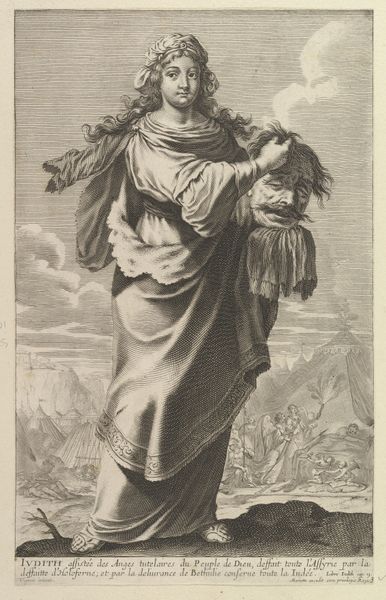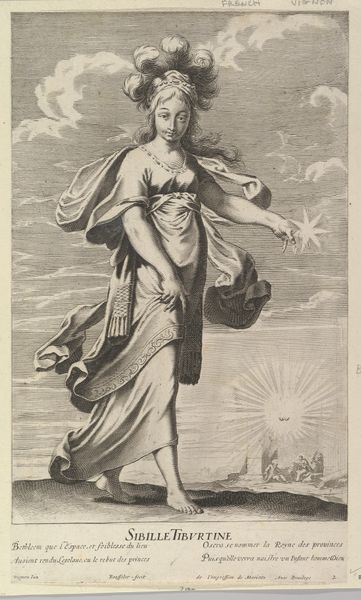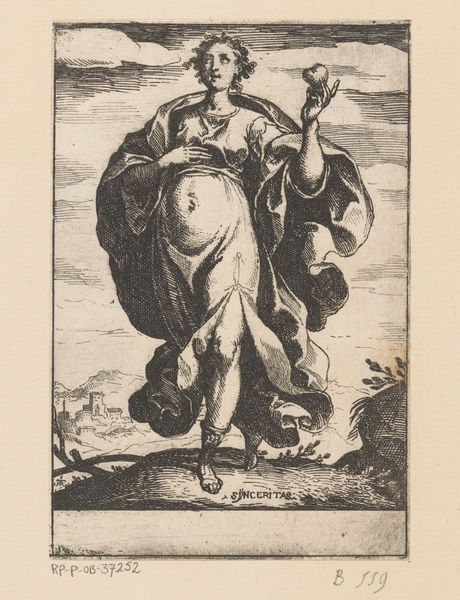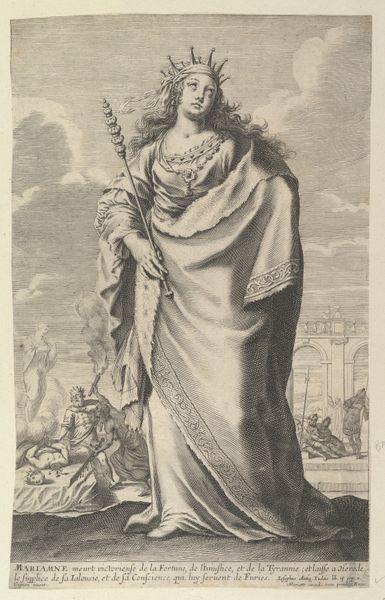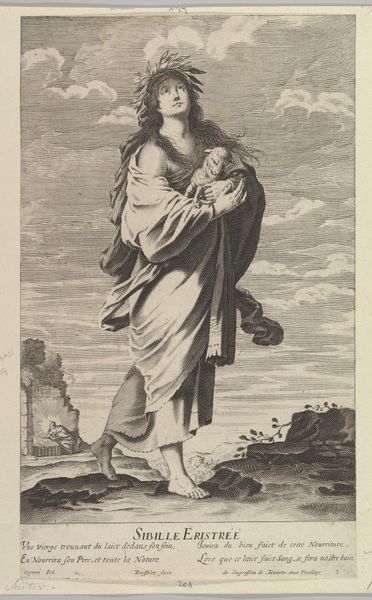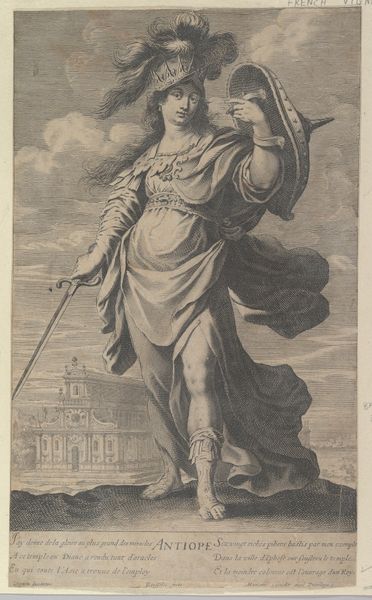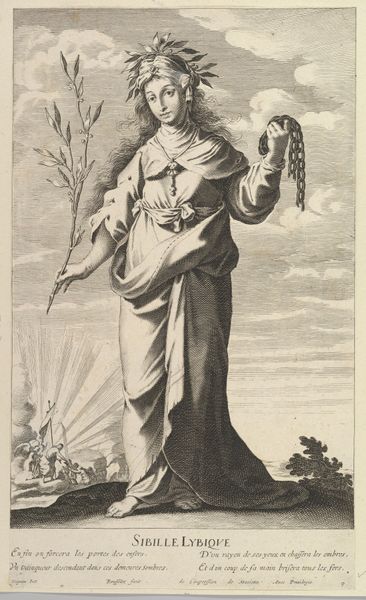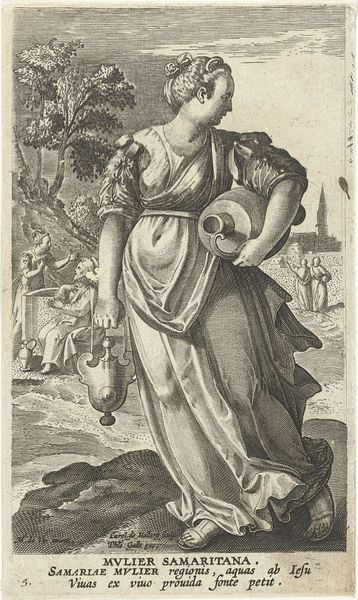
drawing, print, engraving
#
portrait
#
drawing
#
allegory
#
baroque
# print
#
history-painting
#
engraving
Dimensions: sheet: 13 7/8 x 8 3/8 in. (35.3 x 21.2 cm)
Copyright: Public Domain
Curator: This engraving from between 1634 and 1645 depicts Semiramis. The print, titled "Sémiramis", is held at the Metropolitan Museum of Art and is credited to Gilles Rousselet, after Vignon. What's your initial read on it? Editor: The immediate impression is one of power, though perhaps a melancholy power. She dominates the composition, standing over what appears to be a defeated lion, but her gaze is somewhat wistful. Curator: Interesting. I see the lion more as a symbolic vanquished foe, a typical representation of strength overcome by regal authority. This engraving pulls on the Semiramis legend—a powerful queen who built Babylon—so that symbolism is central to its understanding. What resonances do you see with other symbols here? Editor: Beyond the subjugated lion, the crown is crucial, signaling both her royalty and a level of divine mandate or favour. Also the bow. It denotes skill in hunting or warfare. Though she is armed, the depiction doesn't fully celebrate military might, and this blends the role of female ruler into both peacetime accomplishments and war skills. It’s almost… PR. Curator: It aligns with a cultural fascination of that time period with strong female figures—historical and mythological—used to justify or reflect on contemporary politics. It evokes ideas related to Baroque understandings of powerful monarchs ruling large empires and distant lands. Semiramis, of course, represented expansion and building on a large scale. Editor: I agree. And placing the imagery firmly in the context of 17th-century Europe illuminates it even more. Consider the cities built by Semiramis, reflected here with towers at the bottom right... cities that are the base of power. It subtly infers, perhaps, similar cultural ambitions of the Baroque age to project dominance via architectural statements and grand building initiatives. Curator: Exactly. The architecture, the regalia, all these elements communicate both history and contemporary aspiration. Editor: Reflecting on this piece, I find it really powerful how historical figures served as a vessel through which societal norms, ideas of statecraft, gender roles, and leadership could all be examined—even debated. Curator: Yes, it's a lens into a very specific way of thinking about the past and its relevance to the present. The past truly gains new power when understood through these present conditions.
Comments
No comments
Be the first to comment and join the conversation on the ultimate creative platform.
